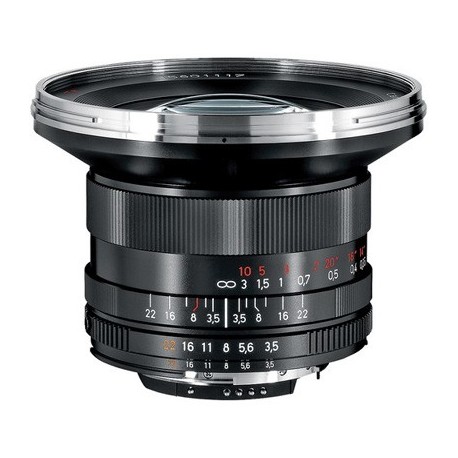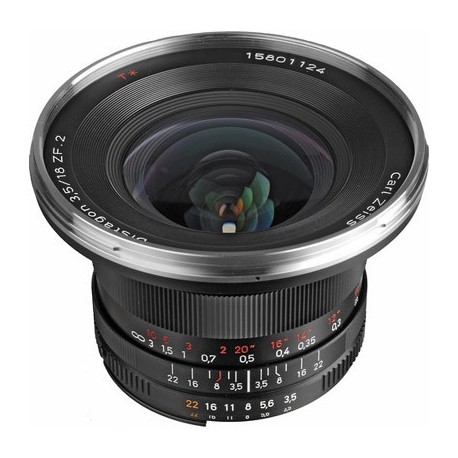Description
Distagon T* 3,5/18
Design
When wide angle views go to extremes and beg the control via an SLR viewfinder, which means that the back focal distance has to be much larger than the focal length, a retrofous design called Distagon is the right choice. Distagon with 13 lens elements in 11 groups Lens made of special glass with anomalous partial dispersion “Floating Elements” design
Distagon T* 3,5/18
Features
Floating Elements Design
Todays camera technologies and high-resolution sensors demand continuous improvement of lens performance. Thanks to the use of the latest floating element design principles, optical aberration effects in ZEISS lenses are reduced to a minimum throughout their entire focusing range. This is achieved by variation of the axial distance between individual lens elements or groups. This adjustment of the lens-to-lens distance is coupled to the distance setting to ensure correct compensation at all times. The mechanical construction of these lenses is extremely complex and they must be assembled with utmost precision both of which are key competencies of ZEISS.
Excellent image quality
The ZEISS range of T* lenses offers the highest possible standards in terms of performance, reliability and, of course, image quality. Quite simply, they are superior in every way. You can count on highly advanced flare control for crisp and brilliant images, for example. And virtually zero geometric distortion, ensuring precise accuracy when reproducing shapes especially useful when photographing products and architecture.
Elaborate stray light reduction
Rich, vibrant colors are vital to creating a lasting impression. Stray light in the lens, however, would lead to a brightening of the image, which is particularly visible in shadow areas. Image contrast is lowered; the image appears dull and bleached. We combine various, elaborate techniques to reduce unwanted stray light. For example, all lens elements are coated with the famous ZEISS T* anti-reflective coating. Additionally, a jet black special paint is applied by hand to all lens element edges to ensure that reflections are prevented from the start.
ZEISS T* anti-reflective coating
All lens elements in SLR lenses from ZEISS feature the T* anti-reflective coating and an optical design that produces brilliant pictures even in unfavorable lighting conditions. We vacuum deposit very thin, transparent coats on the surfaces of the lens elements to make them anti-reflective. Special substances, one by one, are vaporized with very high energy in a high vacuum, which are then deposited on the glass surface as a coating with precisely controlled thicknesses to achieve the desired reduction of reflections. The first coatings were applied by ZEISS back in the 1930s.




